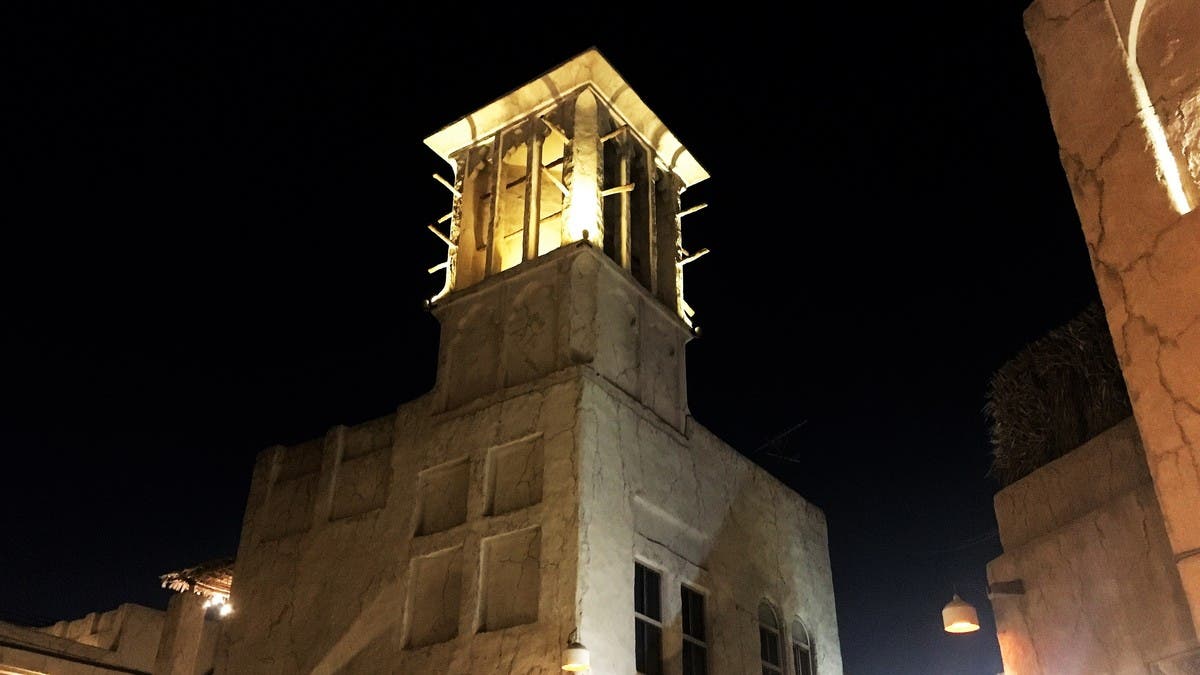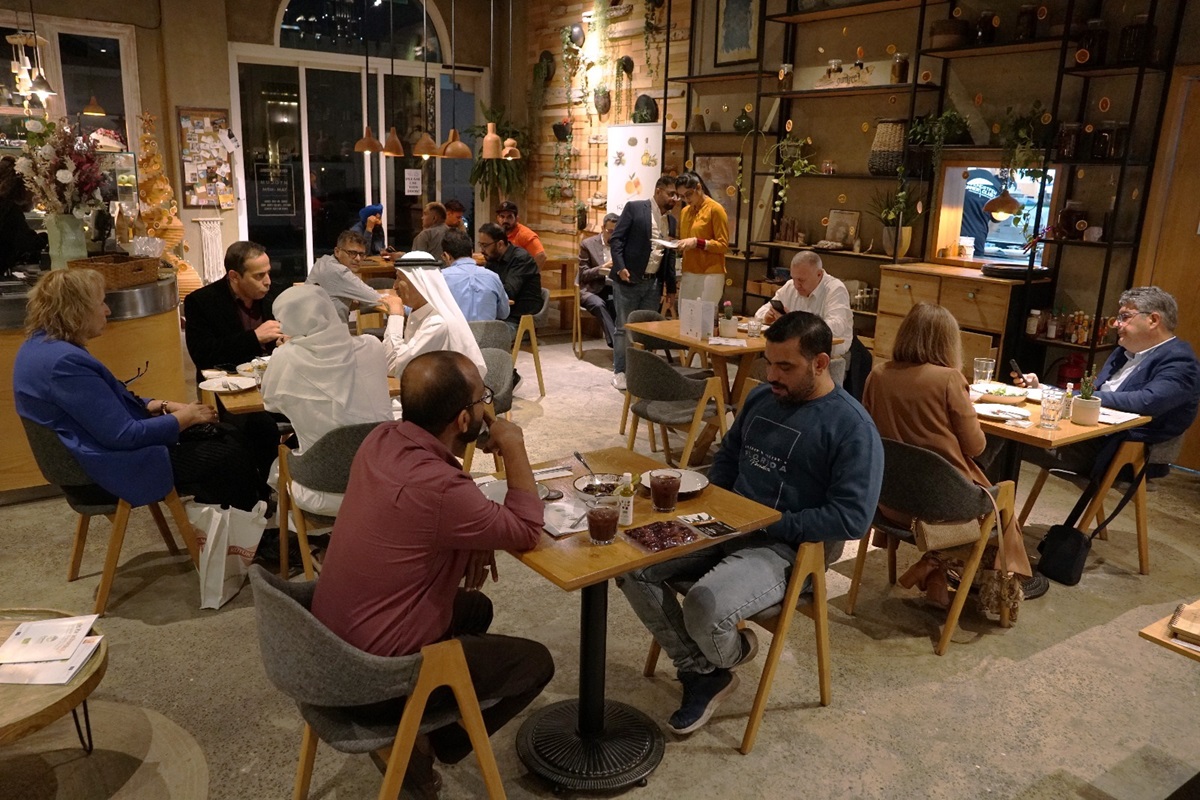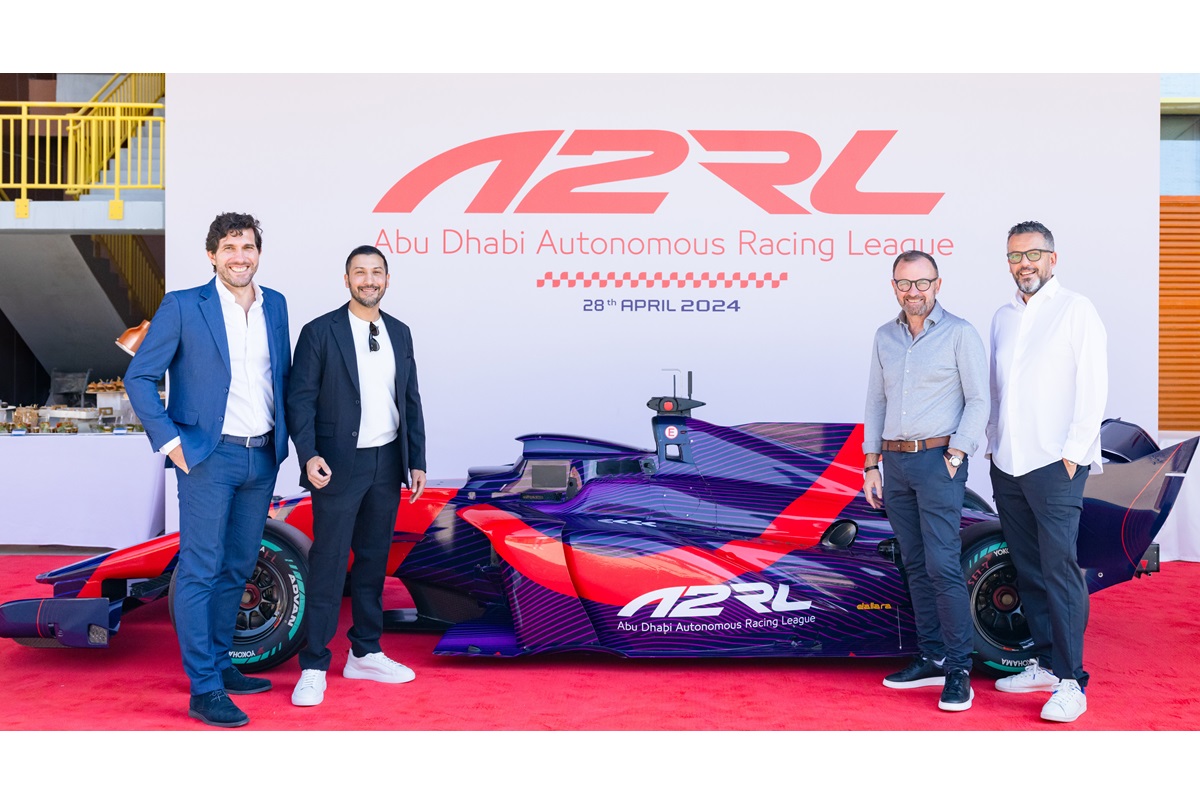While Dubai is famous for the elegant, contemporary designs of its towering glass and steel skyscrapers, a closer look will reveal older buildings dotted around the city amidst the high-rises.
Over the last six decades there has been a shift from using coral to construct buildings to steel, but many traditional mud and coral houses are still found on the outskirts of the city.
The architectural evolution of Dubai eludes to the Emirate’s rapid expansion and growth, with each new style of building marking a significant step towards the glitzy metropolitan city pictured in travel brochures.
For all the latest headlines, follow our Google News channel online or via the app.
“It's incredible what has been built in such a short period of time,” architect Richard Wagner, who gives tours as part of The Guiding Architects, told Al Arabiya. “We can reflect on them to say there were four major phases. There was the early phase of Dubai, before the founding of the nations in 1971, then after the founding all the way into the ‘90s.
“In the 2000s there was the initiation of development phase number one, a big boom which lasted up until the financial crisis in 2009,” he added. “2014 was the announcement of Expo 2020 and I think that's when the current phase started, which I call it Boom 2.0.”
Around the 1890s, Dubai was still mostly desert, with small settlements along the coastline for fishing and pearl diving and the creek for trade. Now known as the Al Fahidi Historical Neighborhood, the area once known as Al Bastakiya showcases the oldest buildings in Dubai, built from mud plaster and coral.
The area was named after the Persian merchants from Bastak who visited the creek for trade, settled, and built houses in the Bastak style – narrow, high-ceilinged courtyard houses with wind towers – which the UAE later adopted.
“Whatever coral they had, they would cut it into pieces, stack it up and plaster is afterwards,” Wagner said. “There were hardly any windows on the outside. All of the light came in from the courtyard on the inside. The outer part of the building is very narrow because it was limited to the length of the longest wood that you would find locally, typically some kind of a date palm tree or mangrove tree.”
With the discovery of oil and subsequent founding of the UAE in the 1970s, things began to change significantly. In the 1980s, half of Al Bastakiya was demolished for more modern developments.
In 1989, the Dubai Municipality decided that the remaining half would also be demolished, but British architect Rayner Otter’s heritage preservation campaign resulted in the Al Fahidi district transformation instead.
“[Otter] took one of the old houses, renovated it, and showed the Emiratis the scope of what you can do with these beautiful courtyard houses,” Wagner said. “It was really that initiative that helped preserve these houses.
“They recreated an urban street area as it was back in the 1920s until maybe the 1950s,” he added. They're all based on photographic records from the 1920s onwards, which they analyzed and modeled the area after.”
In other parts of Dubai in the ‘90s to the early 2000s, the city was beginning to expand, elevating its skyline with taller buildings. Dubai was put on the tourist map with the construction of Burj Al Arab, and all of sudden appeared alongside the iconic images of the Eiffel Tower and the Statue of Liberty.
Government-created development companies built most of the major modern real estate projects of Dubai. Nakheel was given offshore projects, such as creating the Palm Jumeirah and The World Islands. Emaar concentrated on high-rise developments like Dubai Marina, Downtown Dubai and Business Bay.
“Things were looking a little bit old fashioned,” Wagner said. “There was always this clinging on to a heritage-style design. There was even a booklet from the municipality handed out to most of the architects who were doing anything in the city, listing the kind of ornaments, designs, archways and doorways that they should use. Dubai had to break through that to really make it to the top tier of international contemporary design cities.”
One on the most iconic buildings to break from that era was Zaha Hadid’s Opus building in the Burj Khalifa district, a mixed-use 20-story glass cube with a curving cutout in the middle of the building that began construction in 2007.
“[Hadid] never saw it finalized, as she passed away and they were still working on the building at the time,” Wagner said. “It has layered balconies and floating balustrades and a really nice aspect is that it’s an open space with these floating petal-like booths which you can reposition if you have an event. So it gives you a lot of flexibility on the interior.”
With the financial crash of 2009, many projects were delayed or never realized, but it also gave the city a chance to catch up in terms of infrastructure. Though new buildings were going up, tarmacking roads and connecting water and power lines took a little longer.
When Dubai announced the hosting of Expo 2020 in 2014, the economy picked up again and expansion resumed, with contemporary architecture in mind.
Wagner said that new city architects and planners employed by Dubai Municipality “were much more open to contemporary design.”
Despite having built up so much already, Dubai is far from done with impressive architecture. Having already made world history with the Burj Khalifa, a new tower planned for the redevelopment of Dubai Creek will surpass the height of the famous skyscraper.
Put on hold due to COVID-19, the new $1 billion tower will evoke a slender minaret, anchored to the ground by a web of cables. It will stand at between 1,000m and 1,350m high, significantly taller than Burj Khalifa’s 828m and is potentially slated for a 2022 completion.
Read more:
Billionaire bought copy of US Constitution to lend to museum
Maraya Art Center featured in Abu Dhabi Art Fair with a work by Hazem Harb
Modernizing Arabs must not surrender the Arabic language


 World3 years ago
World3 years ago
 World2 years ago
World2 years ago
 Entertainment7 years ago
Entertainment7 years ago
 World7 years ago
World7 years ago
 Entertainment7 years ago
Entertainment7 years ago





